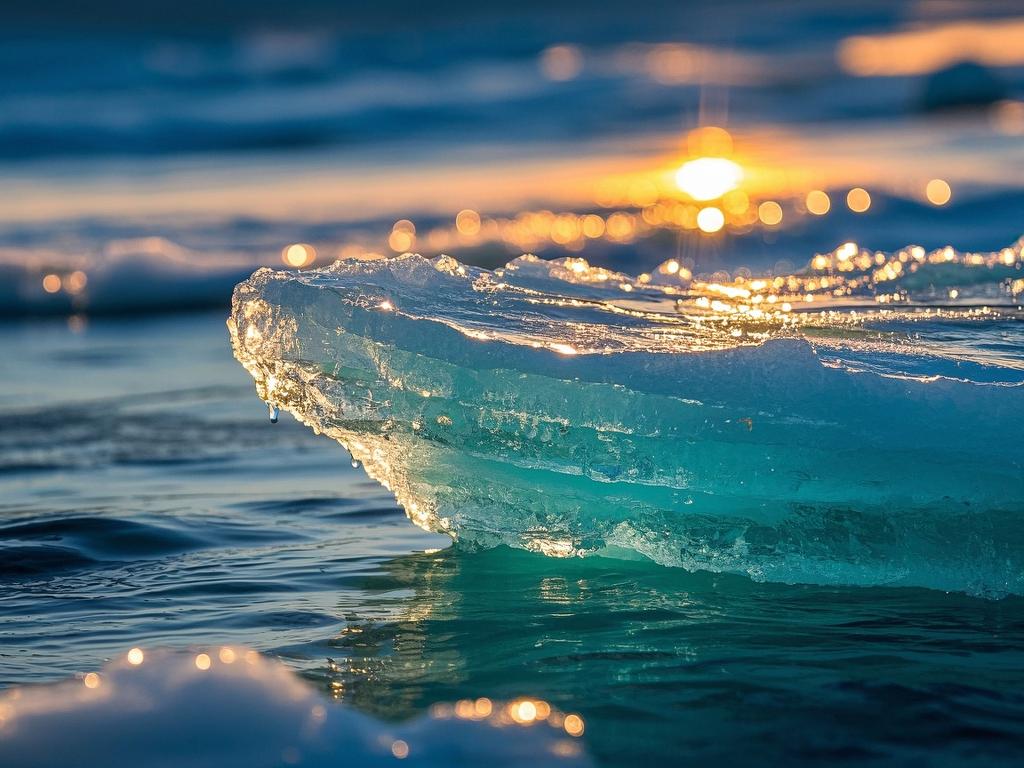
# The Arctic Ice Caps of Russia: A Melting Arctic Heritage
Hey there, fellow earth enthusiasts! Today, let's embark on a journey to explore the rapidly changing Arctic ice caps of Russia. It's a topic that's not just important; it's downright fascinating and a wake-up call for all of us.
The Arctic region has long been a mysterious and pristine part of our planet. Russia, with its vast northern expanse, holds a significant stake in this icy domain. The Arctic ice caps have been around for millennia, a silent witness to the passage of time. They've been shaped by countless factors, from natural climate cycles to the ebb and flow of ocean currents.
But now, they're in the throes of a dramatic transformation. And the numbers are staggering. Scientists estimate that the Arctic ice is melting at an alarming rate. In recent decades, we've seen a precipitous decline in the extent of the ice cover. It's like watching a massive glacier slowly but surely being chiseled away by the relentless forces of climate change.
Take, for example, the summer sea ice minimum. Over the past few decades, this has been shrinking year after year. We're talking about a reduction that's far beyond what natural variability could account for. It's as if Mother Nature has suddenly turned on a turbocharged melting machine.
So, what's driving this rapid melting? Well, a big culprit is the increasing global temperature. As the planet warms, the Arctic is feeling the heat disproportionately. It's like the Arctic is the canary in the coal mine of climate change. And human activities, especially the burning of fossil fuels, are the main villains here. The carbon dioxide and other greenhouse gases we've been pumping into the atmosphere are trapping heat, and it's this extra warmth that's melting the ice caps.
Now, let's talk about the implications. For Russia, the melting Arctic ice caps are both an opportunity and a threat. On one hand, it opens up new shipping routes. The Northern Sea Route, which runs along the northern coast of Russia, could potentially become a major international shipping lane. This would cut down travel time between Europe and Asia significantly. It's like a new superhighway in the Arctic, but one that comes with a big asterisk.
On the other hand, the melting ice is also causing problems. It's leading to rising sea levels, which could flood coastal cities in Russia. Just imagine the port city of Murmansk being inundated by the sea. It's a nightmare scenario that could become a reality if we don't take action.
And then there are the impacts on the unique Arctic ecosystem. The ice caps are home to a variety of species, from polar bears to walruses. These animals are adapted to life on the ice, and as it melts, their habitats are disappearing. It's like evicting a whole bunch of tenants from their homes without giving them anywhere else to go.
We need to think about this in terms of a global heritage. The Arctic ice caps are not just Russia's; they're a part of our shared planetary heritage. They're like a precious piece of art that's being vandalized right before our eyes.
We can't just sit back and watch this happen. We need to take bold action. We need to reduce our greenhouse gas emissions. It's time to transition to renewable energy sources like solar, wind, and hydro power. We need to be the change we want to see in the world.
So, let's start a conversation. What do you think we can do to save the Arctic ice caps? Share your ideas in the comments below. Let's make a difference before it's too late. Because once these ice caps are gone, they're gone forever. And that would be a tragedy for all of us.
The Arctic ice caps of Russia are a ticking time bomb. But with collective action, we can still defuse it. Let's not let this precious heritage melt away into history. It's up to us to ensure that future generations can still marvel at the beauty and wonder of the Arctic ice. So, are you ready to join the fight? The clock is ticking!

